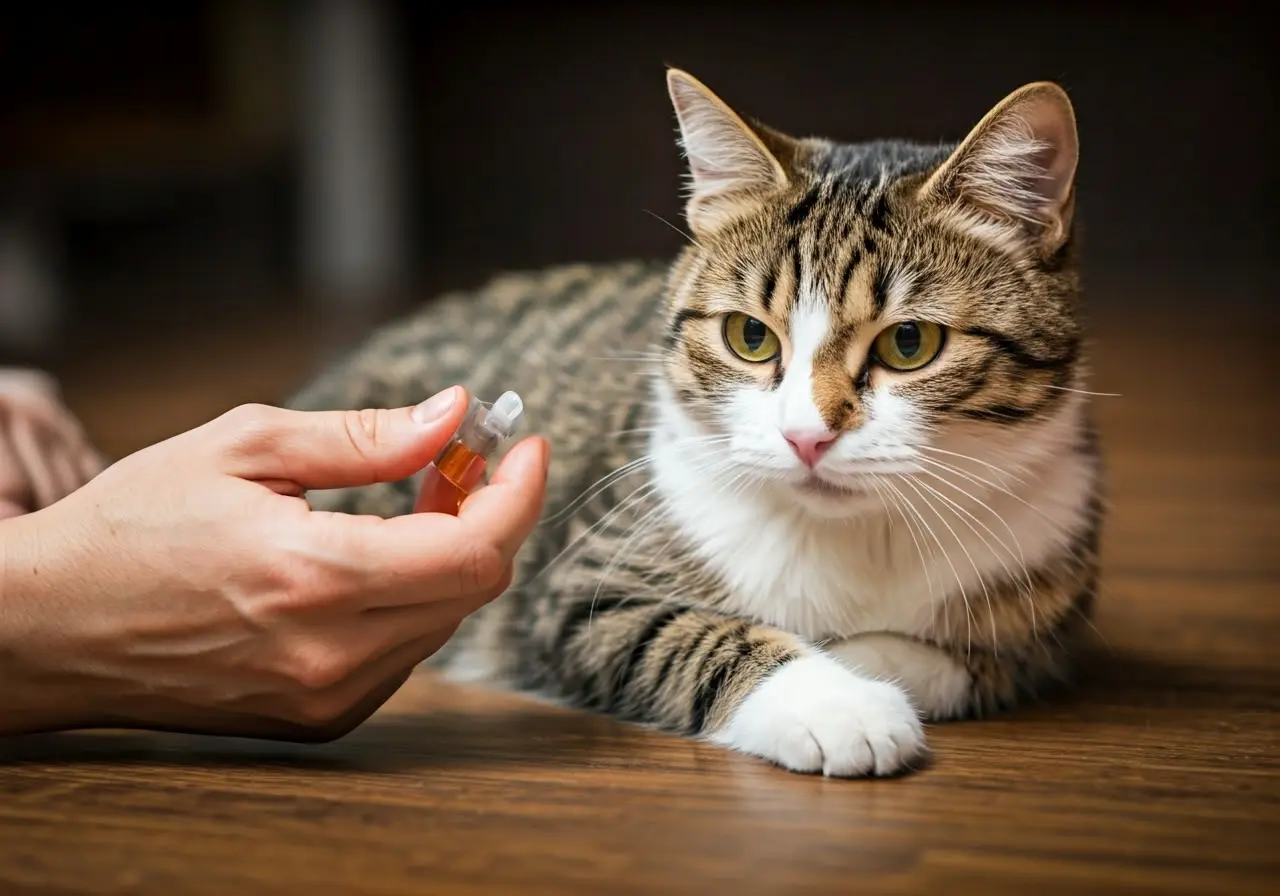Administering medication to your cat can be a challenging task for many pet owners. However, with a few handy tips and a little patience, you can make this a smoother experience for both you and your furry friend. In this blog, we’ll explore some essential facts and advice to help you feel more confident and ensure your cat gets the medication they need.
1. Understanding the Medication
Before you attempt to medicate your cat, it’s crucial to understand what the medicine is for and how it should be administered. Always read the instructions provided by your vet and ask any questions if something isn’t clear. Different medications have different requirements—some need to be given with food, while others must be administered on an empty stomach. Understanding these instructions can make a big difference in how effective the medication will be and how easily you can give it to your cat.
Cats can be very particular about what they ingest, so understanding the potential side effects and how the medicine interacts with other substances is essential. Some medications might cause your cat to feel drowsy or nauseous, which can affect their behaviors and routines. By knowing these details, you can better prepare for any adjustments you may need to make to keep your cat comfortable during their treatment.
It’s also helpful to keep a medication log to track when and how the medication is given. This can be especially useful if more than one person is involved in your cat’s care. It ensures that there’s no mix-up on dosages and administration times. By staying organized, you can make the medication process more manageable and less stressful for both you and your feline friend.
2. Choosing the Right Time
Pick a calm and quiet time when your cat is most relaxed to administer their medication. This will help reduce stress and make the experience smoother. For instance, it’s usually easier to give medication when your cat is in a peaceful state, such as after a meal or during their cozy napping time. Synchronizing medication windows with their schedule can create a routine, which cats tend to adapt to over time.
Attempting to medicate a cat during high-energy periods or when they’re feeling anxious can make the process more difficult and stressful. It’s important to convey a sense of calm and patience. If you’re feeling rushed or anxious, your cat is likely to pick up on these emotions and become more resistant. Taking a few deep breaths and projecting a calm demeanor can significantly influence how your cat responds to medication time.
Consistency is also key. If your vet has prescribed medication that needs to be given at specific times, try to stick to those times every day. This routine helps your cat anticipate what’s coming and can make them less likely to resist. Don’t forget to reward your cat with gentle pats and their favorite treat afterward, reinforcing that good things come after medication.
3. Hiding Pills in Food
One of the easiest ways to give your cat a pill is to hide it in a small amount of their favorite food or a treat designed for this purpose. Make sure the food portion is small enough that your cat will eat it all. There are special treats called pill pockets that are designed specifically to conceal medication. These treats are malleable and can be molded around the pill, making it both appealing and easy to consume.
However, be mindful that some cats are adept at detecting pills in their food and might reject the altered treat. You may need to experiment with different flavors and types of food to find out what works best for your cat. Some pet owners have found success using strong-tasting foods like tuna or cheese, as these can mask the taste and scent of the medication more effectively.
If you find that your cat is persistently refusing their medicated treats, consider consulting your vet. Some medications can be compounded into flavored formulations that are more palatable for picky eaters. Your vet may also have additional suggestions or alternative methods to ensure your cat receives their necessary medication without too much fuss.
4. Using a Pill Gun
A pill gun can be a handy tool for administering pills to your cat. It allows you to place the pill at the back of your cat’s throat, which can help avoid any bitter taste that might cause them to spit it out. To use a pill gun correctly, first place the pill inside the device. Then, gently open your cat’s mouth, ideally with the help of another person if possible, and swiftly use the gun to deposit the pill. The goal is to place the pill at the back of the tongue where it triggers an automatic swallowing response.
It’s essential to be gentle yet firm when using a pill gun. Hold your cat’s head steady and make sure they are as calm as possible before beginning. This method reduces the amount of time your hands are near their mouth, decreasing the chances of getting scratched or bitten. Once the pill is administered, a gentle stroke on their throat or a little blow on the nose can encourage swallowing.
If you’ve never used a pill gun before, you might want to watch instructional videos or ask your vet for a demonstration. With practice, this method can become one of the quickest and least stressful ways to give your cat their medication. Remember, pairing the experience with a treat afterward can help reinforce positive associations with the process.
5. Administering Liquid Medication
When giving liquid medication, use a syringe or dropper and gently squirt the liquid into the side of your cat’s mouth. Be cautious and go slowly to prevent choking or aspiration. It’s often helpful to have someone assist you in holding your cat firmly but gently during this process. Ensure you angle the syringe towards the side, aiming for the pocket between the cheek and teeth, rather than directly down the throat.
Cats tend to resist new sensations, so approach them gently and speak in a soothing tone to keep them calm. The actual delivery of the medication should be done steadily and at a pace your cat can handle. Rapid administration may cause your cat to gag or spit out the medicine, negating the entire process. If your cat struggles too much, take a break and try again after they’ve calmed down.
Liquid medications can sometimes be flavored to make them more palatable for cats. Ask your vet about this option if you find administering liquid medicine to be particularly challenging. This can sometimes make a significant difference in how willing your cat is to accept their medication.
6. Rewarding Your Cat
Always reward your cat with plenty of praise and their favorite treat after giving them medication. This helps create a positive association with the process. The reward can be anything your cat enjoys, such as their favorite snack or a few minutes of playtime with a beloved toy. The key is to make medication time as pleasant an experience as possible.
Positive reinforcement goes a long way with cat medication administration. By consistently offering rewards after medication, your cat will start to associate the experience with good things. This can gradually reduce their anxiety and resistance over time. Some pet owners even find that their cats become more cooperative when they anticipate a treat immediately following the medication.
It’s also beneficial to offer praise in a soothing and affectionate tone. Cats respond well to calm voices and gentle touches. If your cat is particularly stressed during medication times, consider setting aside some extra time afterward to cuddle or engage in a relaxing activity they enjoy. Building trust and reducing stress can make future medication administrations easier for both you and your feline friend.
7. Consulting Your Vet
If you’re struggling to give your cat their medication or if they are experiencing adverse reactions, don’t hesitate to contact your vet for advice. They can provide alternative methods or adjust the treatment if necessary. Veterinarians understand the challenges of medicating cats and often have a wealth of tips and tricks to share from their experiences.
In some cases, your vet may suggest switching to a different form of medication that’s easier to administer. For example, some medications can be compounded into flavored liquids or even transdermal gels that are applied to the inside of the ear. If your cat is particularly resistant or if the medication has unpleasant side effects, these alternatives can be a game-changer.
Always keep an open line of communication with your vet. They can provide ongoing support and adjustments, ensuring your cat receives the best care possible. Regular follow-ups can also help monitor your cat’s progress and address any issues that arise. Remember, you’re not alone in this—your veterinary team is there to help you and your cat through the medication process every step of the way.

















